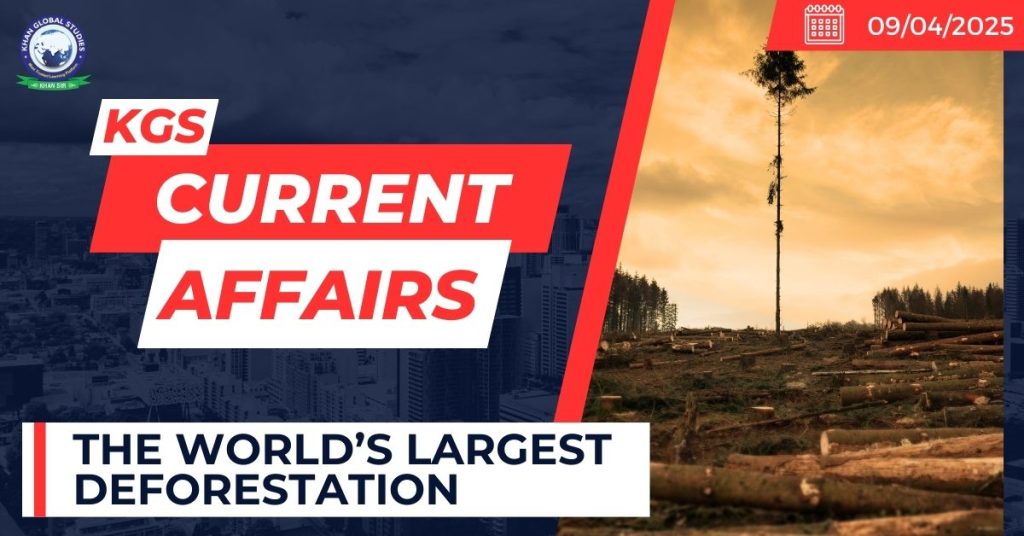Context:
Indonesia is planning to conduct the world’s largest deforestation program to practice monoculture in order to meet food security and renewable energy demands.
More on the News
Indonesia planned to clear forest land roughly the size of Belgium (30,688 km²) to produce sugarcane-derived bioethanol, rice and other food crops.
- Bioethanol a liquid biofuel/renewable fuel made from plants such as sugar cane, corn, soybeans, wheat straw, woodchips, and more recently microalgae. They are produced through ABE (acetone-butanol-ethanol) fermentation.

It has been building food estates, massive plantations designed to improve the country’s food security for decades.
It has now expanded such projects to include crops to produce bioethanol, in pursuit of Indonesia’s ambition to improve its energy mix and develop more renewable sources.
It has vast potential for bioethanol production due to its extensive agricultural land but currently lacks sustainable feedstocks, like sugarcane and cassava.
Impact this project

- Indonesia is home to the world’s third-largest rainforest (after Brazil and the Democratic Republic of the Congo) and many endangered species, including orangutan, elephants and giant forest flowers can be at risk due to this planned deforestation.
- The Associated Press news agency estimates that carbon dioxide emissions from clearing land for the project will total 315 million tons of C02 equivalent.
- This will displace indigenous groups who rely on the area for hunting, fishing and other aspects of their cultural identity
- Although there are plans for reforestation but it can hardly match the ecological benefits of old-growth ecosystems, which store vast amounts of carbon in their soils and biomass, regulate water cycles and support biodiversity.
- According to Global Forest Watch since 1950, more than 74 million hectares (285,715 square miles) of Indonesian rainforest (an area twice the size of Germany) have been logged, burned or degraded for development of palm oil, paper and rubber plantations, nickel mining and other commodities.
Overview of India’s forest land
As per the India State of Forest Report (ISFR) 2023 the total forest and tree cover is 8,27,357 sq km, which is 25.17% of India’s total geographical area.

The total Forest Cover is 21.76% whereas the Tree Cover is 3.41% of the geographical area (GA) of the country.
- Forest cover refers to all lands, more than or equal to one hectare in area, with a tree canopy of more than or equal to 10%, irrespective of ownership and legal status; and includes orchards, bamboo, and palm.
As per ISFR 2023, the present assessment also reveals that 19 states/UTs have above 33% of the geographical area under forest cover.
Out of these, only eight states/UTs namely Mizoram, Lakshadweep, A & N Island, Arunachal Pradesh, Nagaland, Meghalaya, Tripura, and Manipur have forest cover above 75%.
States with largest forest and tree cover:
- Area-wise: Madhya Pradesh> Arunachal Pradesh> Maharashtra.
- Percentage-wise: Lakshadweep> Mizoram> Andaman & Nicobar Islands
States with largest forest cover:
- Area-wise: Madhya Pradesh> Arunachal Pradesh> Chhattisgarh.
- Percentage-wise: Lakshadweep> Mizoram> Andaman & Nicobar Islands
States with largest tree cover:
- Area-wise: Maharashtra> Rajasthan> Uttar Pradesh.
- Percentage-wise: Chandigarh>Delhi> Kerala

